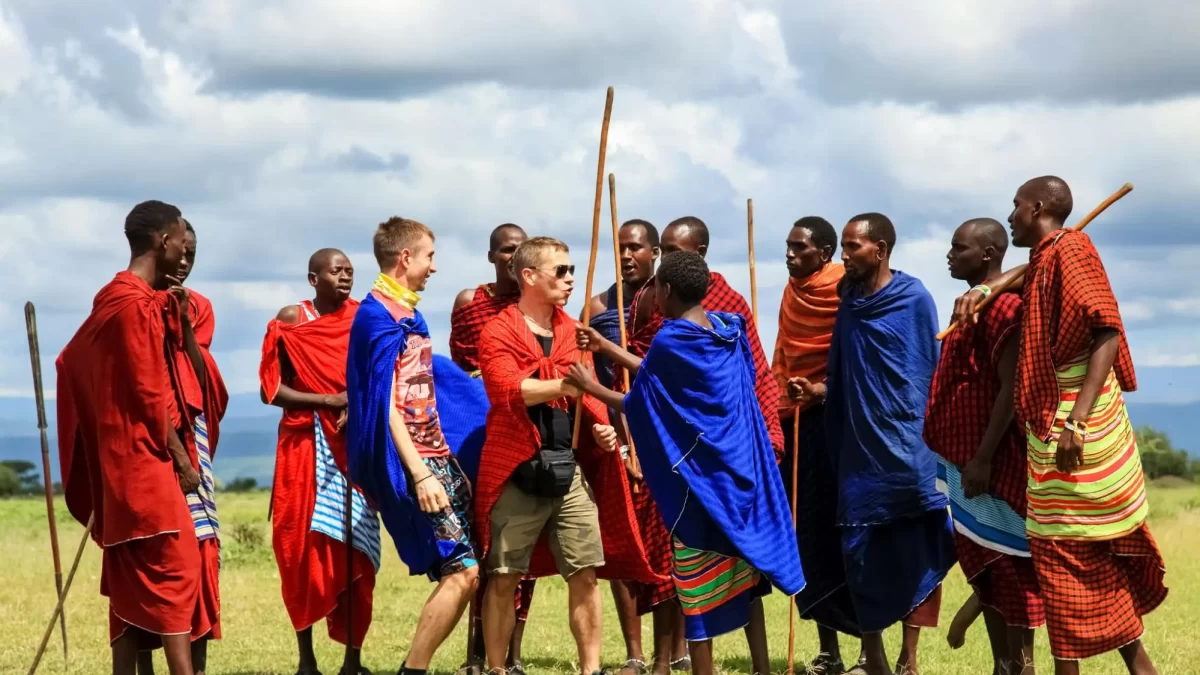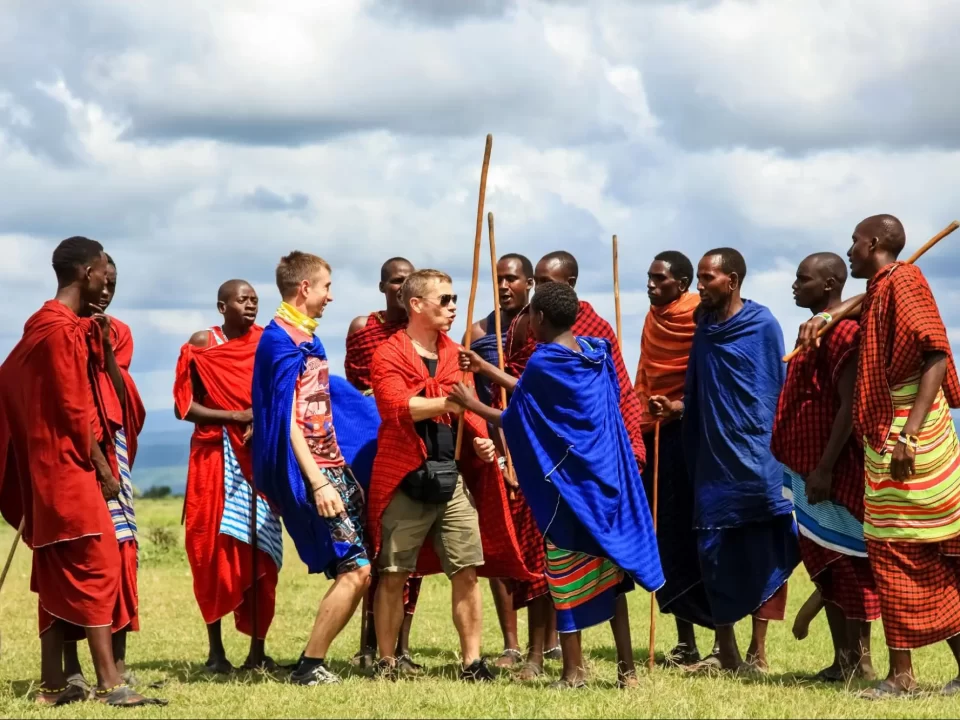Experience the Masai People & Culture in Masai Mara

Adventure Holidays in East Africa
February 21, 2024
Visit the Giraffe Centre in Nairobi Kenya
February 21, 2024Experience the Masai People & Culture in Masai Mara – Explore Authentic Masai Villages in Kenya
Embark on a journey to Experience the Masai people & culture in Masai Mara, delving into the allure of this ancient tribe residing in the regions surrounding the Maasai Mara in Kenya and northern Tanzania. The iconic images of Masai warriors, adorned in vibrant red, purple, and blue patterns, and their fierce women bedecked in bright beaded jewelry against the backdrop of the African savannah, come to life as we shed light on why a visit to the Masai people is a must on your safari in Kenya.
Discover the Vibrancy of Masai Garb and Adornments
Upon entering the village, you are greeted by an explosion of colors emanating from the vibrant garments, known as shukas, worn by the Masai. These bright sheets create a photogenic contrast against the natural browns and greens of the landscape. The women, in particular, embellish themselves with brightly beaded necklaces, bracelets, and amulets, using these ornaments to express their identity and social status. As a visitor, you may have the opportunity to purchase these handcrafted souvenirs, supporting the village while taking home a piece of authentic African artistry.
Warm and Enthusiastic Welcomes
The Masai people take immense pride in their traditional way of life, centered around pastoralism and warriorhood, with cattle holding a pivotal role in their culture. Welcoming visitors with song and dance, the Masai offer a warm and excited reception. During certain times, a special dance called adumu, or the “jumping dance,” takes place. This involves graceful jumps several feet high, with a central dancer levitating higher and higher to the rhythmic tunes. Visitors are often invited to join in the dance, adding to the joyful ambiance of the encounter.
Intriguing Village Huts and Dwellings
The traditional Masai village, known as a Manyatta, comprises small huts made from a mixture of mud, cow dung, thatch, and ash. Arranged in a circular pattern, these huts, or bomas, serve the dual purpose of providing shelter for the villagers and protecting livestock from potential predators. Constructed by the women, these dwellings exhibit a unique lifestyle where an entire family shares modest living spaces, occasionally accommodating small livestock. The dimensions of each boma vary, with an average size of around 3 x 5 meters and a height of approximately 1.5 meters.
Rooted in Tradition – A Famous Nomadic Tribe
The Maasai tribe, with a history dating back to the 15th century, stands as one of the oldest inhabitants of East Africa. Resisting modern influences, the Maasai people adhere to a nomadic lifestyle, with pastoralism and warrior traditions deeply embedded in their daily activities. A typical day in a Maasai village involves women and girls engaging in milking cows and goats, while herders (men) take cattle for grazing on the vast Mara plains. Despite their proximity to elephants, giraffes, zebras, and predators, the Masai have coexisted peacefully with wildlife for centuries, maintaining a strong aversion to consuming game meat.
In the heart of Masai land, where nature and wildlife thrive, a visit to a Maasai village unveils the tribe’s ancient traditions. If your safari adventure itinerary does not include a visit to a Masai village, consider adding this enriching experience, and Trek Africa Expeditions can assist in crafting the perfect itinerary to Masai Mara National Reserve, complete with an immersive encounter with the Masai people.


